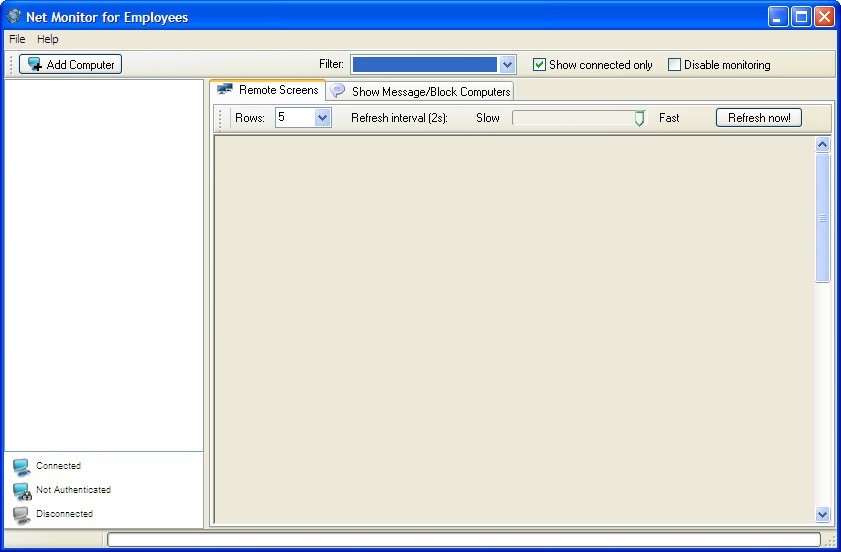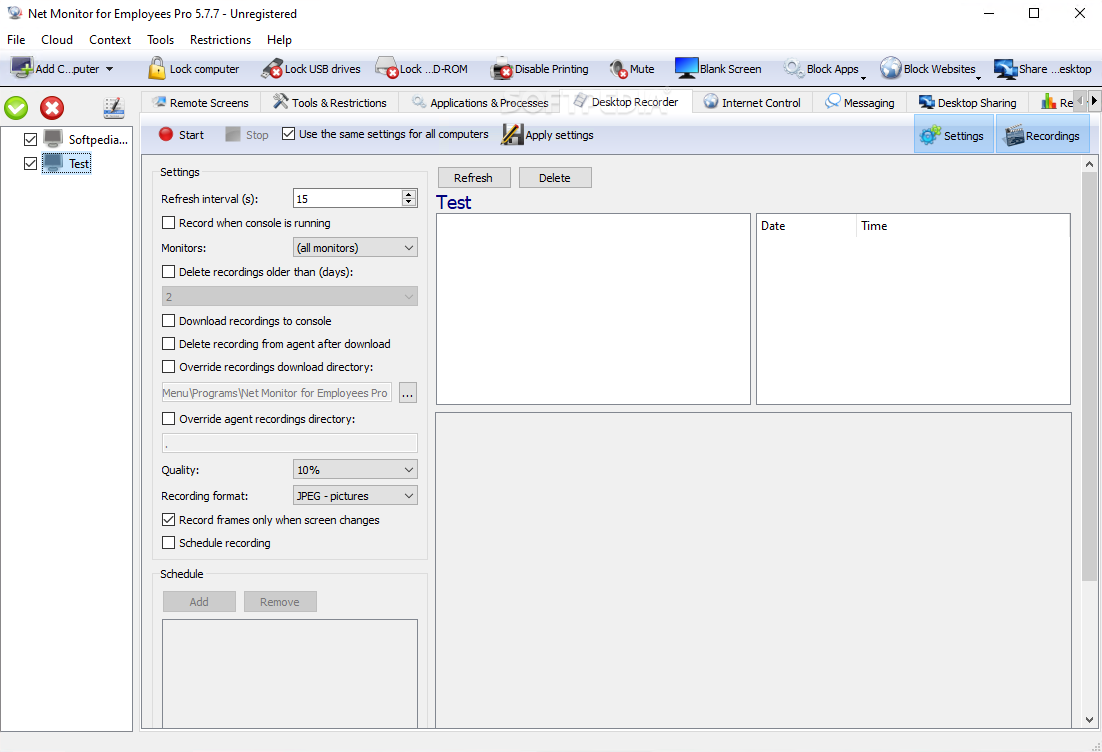

Similarly, the DC Circuit Court in Anheuser-Busch also discussed the nature of the collective bargaining requirement for the use of surveillance cameras.
#NET MONITOR FOR EMPLOYEES USES AND PURPOSE INSTALL#
The Seventh Circuit rejected this argument and made the following observations regarding the Labor Board’s Order in the National Steel case: (1) The Board’s Order preserves managerial interest and secrecy in the use of hidden surveillance cameras while honoring the Union’s collective bargaining rights (2) It only requires negotiation over the company’s installation and use of hidden surveillance cameras (3) It does not dictate how the interests of the parties are to be accommodated in the negotiation process (4) It does not address the employer’s ability to establish practices on the subject matter subsequent to having bargained to impasse, thereby inferring that if an impasse is reached the employer could nevertheless install the cameras upon proper notification to the Union (5) It does not mandate an outcome to the negotiation (6) It does not make any suggestion that National Steel must yield any prerogatives (7) It simply directs National Steel to initiate an accommodation process and to provide confidential information as per a negotiated confidentiality agreement or protective order and, (8) It does not eliminate National Steel’s management right to use hidden cameras and it seeks to preserve the level of confidentiality necessary to allow for the continued effective use of such devices. In the National Steel case, National Steel argued that bargaining over hidden surveillance cameras, especially their location, prevents an employer from meaningfully using such devices because the bargaining process would compromise the secrecy that is required for them to be effective as well as being so cumbersome that it would not be able to deploy hidden cameras when the need arose.

Of course, each employer raised the question of what must be negotiated through collective bargaining prior to the installation of the surveillance cameras. The Circuit Courts based their decisions on the 1997 Labor Relations Board’s decision in Colgate-Palmolive Company, where the Board equated surveillance cameras to other mandatory subjects of bargaining such as physical examinations, drug/alcohol testing requirements, and polygraph testing because of their shared purpose as “investigatory tools.” The Board in Colgate-Palmolive, as adopted by the Circuit Courts in National Steel and Anheuser-Busch, held that “the use of hidden surveillance cameras ‘has the potential to affect the continued employment of the employees whose actions are being monitored.” NLRB, 324 F.3d 928 (7 th Cir., 2003) and Brewers and Maltsters, Local Union #6 v. Installation and use of video surveillance cameras is a mandatory subject of collective bargaining and is an unfair labor practice if bargaining does not occur prior to their installation.īoth the Seventh Circuit and District of Columbia Circuit Courts have addressed this issue, and relying upon prior decisions rendered by the National Labor Relations Board, have consistently held that the installation and use of hidden surveillance cameras in the workplace constitutes a mandatory subject of bargaining, and in the absence of such bargaining, is an unfair labor practice. Whether the video surveillance tapes which reveal employee misconduct may be used by the Employer in disciplinary proceedings against the employees even though the evidence was obtained as a result of an unfair labor practice.Ī. Whether past Union actions where surveillance cameras have been used in the District constitutes a waiver by the Union such that the District does not have any obligation to bargain with them before the use of the surveillance cameras.Ĭ. Whether the District has an obligation to bargain with the Union prior to installing the surveillance cameras and if it fails to do so whether it commits an unfair labor practice.ī. The questions to be considered are as follows:Ī.


However, to assure that evidence will be considered if the termination is challenged, Districts must comply with the collective bargaining requirements reinforced by the July 2005 United States District of Columbia Circuit Court of Appeals case of Brewers & Maltsters, Local Union #6, et al. When confronted with concerns of employee theft, Districts have turned to hidden surveillance cameras to obtain the proof to support a termination.


 0 kommentar(er)
0 kommentar(er)
